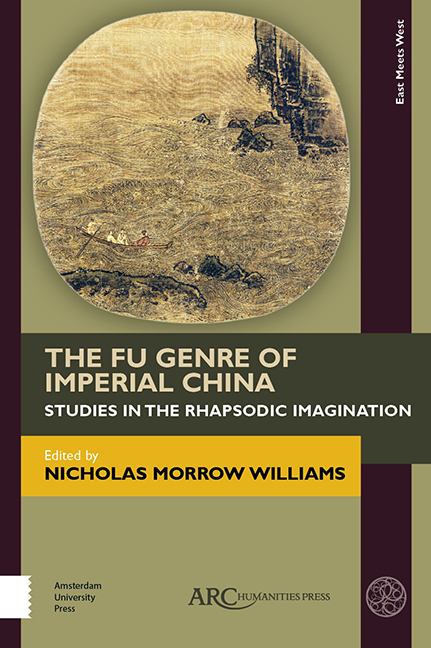4 - The Assimilation and Dissimilation of Fu and Shi Poetry up to the Tang Dynasty
Published online by Cambridge University Press: 20 November 2020
Summary
THE INTIMATE RELATIONSHIP between fu and shi poetry, whose mutual influence has been so important throughout the history of the genres, cannot be neglected. The two genres started out with distinct definitions, motivations, and contexts, but they frequently assimilated to one another; and yet a countervailing trend of dissimilation also led each genre to assert its independence after all. This chapter aims to shed light on this dynamic by tracing its development through different historical periods in early medieval China, and thus, to reveal the mutual influence and distinction between the fu and shi genres.
The Pre-Qin Period and Han Dynasty
During the pre-Qin periods and the Han dynasty, the relationship between the two genres can be seen as shi being the original and proper form of lyric poetry, while fu was a derivation and subgenre.
The earliest discourses on the relationship between shi and fu flow out of the need of fu writers to establish the identity of the genre, and, thus, are embedded in the very discussion on the origin of the fu. The two most important and influential theories from the pre-Qin to the Han periods are “fu is an outflow of the ancient Songs” (Fu zhe gu Shi zhi liu 賦者古詩之流, in other words, fu is a subgenre of poetry derived from the Shijing 詩經 or Book of Songs) and “To recite without singing is called fu” (Bu ge er song wei zhi fu 不歌而誦謂之賦). In the sections below, I will explore how the two theories represent the counteracting tendencies of assimilation and dissimilation between the two genres in question.
“Fu Is an Outflow of the Ancient Songs”: Canonizing a Genre Through Assimilation
The first theory is considered to have originated in the first line of Ban Gu's 班固 (32– 92) preface to his “Liang du fu” 兩都賦 (Fu on the two capitals): “It has been said that the Fu is an outflow [in other words, a derivation] from the ancient Songs.” For our purposes here, there are three points of interest in this revealing example of the selfconsciousness and reflection of a fu writer.
- Type
- Chapter
- Information
- The Fu Genre of Imperial ChinaStudies in the Rhapsodic Imagination, pp. 63 - 82Publisher: Amsterdam University PressPrint publication year: 2019



